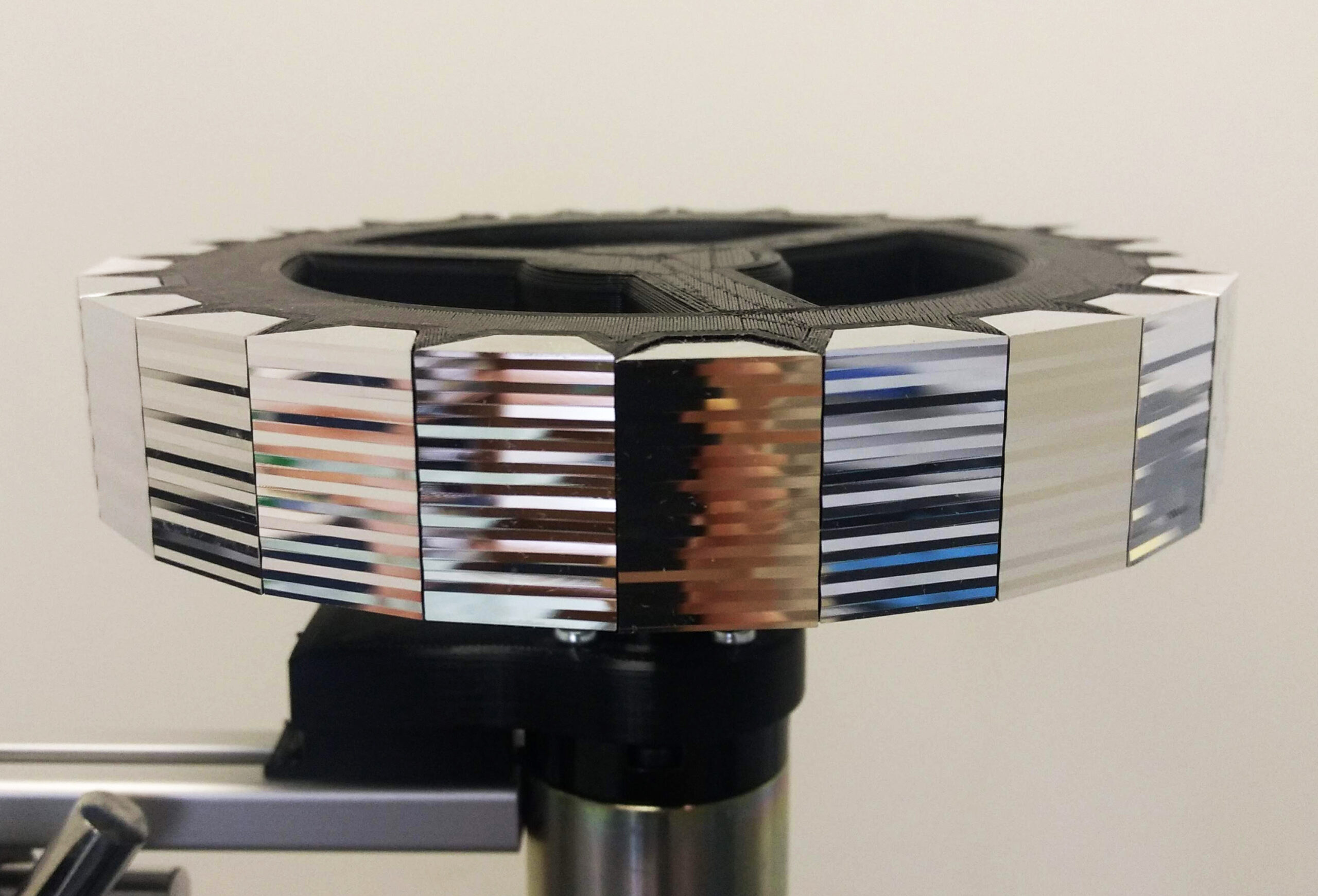Artist Deirdre Feeney’s creative application of microfabrication processes in her visual artwork MirrorMirror led to novel artistic outcomes and the necessity to push the boundaries of ANFF-SA’s surface polishing capabilities.
Artists are increasingly collaborating with scientists and engineers to problem solve and creatively apply STEM methodologies into artworks. University of South Australia Contemporary Art lecturer Deirdre Feeney’s cross-disciplinary engagement with ANFF to develop components for an optical image system artwork allows her to focus the viewer’s attention to technologically mediated visual experiences.

Dr Feeney works with optical image systems as tools to explore constructed reality, exposing the components and the mechanisms of how we see what we see. Today, people have a very passive experience interacting with imaging technology like mobile phones and displays. As optical technology advances and the scale of components decreases, we don’t think about how these images are generated and how our visual experience is manipulated. It’s invisible to us.
Based on artist-engineer Charles-Émile Reynaud’s nineteenth century application of optical mechanics to create his animated moving picture shows, Dr Feeney’s MirrorMirror creates moving pictures using modern optics, electronics and digital fabrication – revealing the components, materials and mechanism of the apparatus so that the viewer can engage with modern visual technology in a tangible way. With her artworks, Feeney poses the question: ‘How it is we’re seeing what we’re seeing?’
Reynaud’s traditional system incorporates a plane mirrored polygon and series of matching image frames rotating to establish the illusion of movement in the projected image. MirrorMirror explores possibilities for creating moving images using a single image source and series of 3D-patterned mirrors.
Funded by an Australian Network for Art and Technology (ANAT) Synapse Residency Grant and facilitated by the micro-manufacturing expertise at ANFF, Dr Feeney’s creative project began by using ANFF’s nano-lathe at the ANU Research School of Physics in collaboration with Dr Geoff Campbell (ANU). Next, Dr Feeney and ANFF micromachining expert Mark Cherrill worked together to apply 3D-modelling and micro-milling techniques to develop a highly polished mirrored polygon as the central component of her optical moving image system. In each mirror, facet bands manipulate light in a different way to generate the illusion of 3D movement from a single 2D image source of parallel lines.
ANFF’s flagship Kira SuperMill 2M was the right tool to fabricate the high precision mirrors. However, the degree of surface roughness needed to put an image in motion had not yet been accomplished by the instrument. Mr Cherrill expanded the machining capability of the Kira SuperMill by employing a mono crystal diamond cutting tool to achieve the ultra-precision cuts and optically polish the mirror facets to a surface roughness of 7nm, a ten-fold improvement in surface roughness manipulation.
For Dr Feeney, through the fabrication process she’s been able to tangibly understand how materiality can control the depth and movement of the image, a realization she hopes to impart to audiences through her artworks.
As an outcome of the collaboration, ANFF-SA can now machine other devices requiring ultra-precision finishes in-house. ANFF’s new capabilities in machining high aspect ratio moulds are being integrated into research and industry projects focused on developing medical applications for IVF, circulating tumour cells, sperm separation and cardiac bioengineering. In addition, the surface finish achieved with the mono crystal diamond cutter is so superior that ANFF-SA is now investigating potential collaborations with researchers and industry working in space optics.
